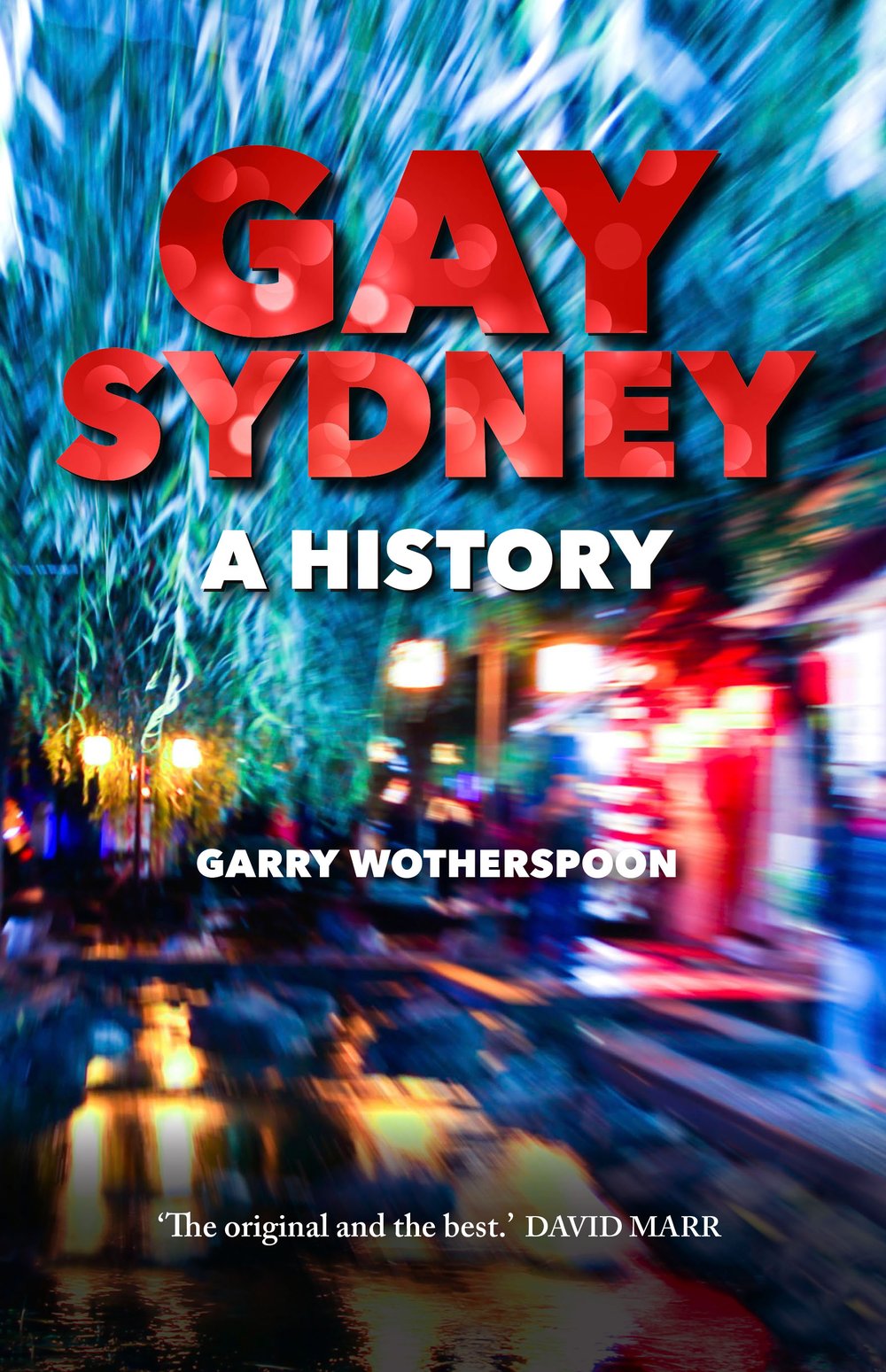What was it like to live through the AIDS epidemic in Sydney? What has changed since then, and what hasn't? Garry Wotherspoon's Gay Sydney: A HIstory is a newly updated version of his 1991 classic City of the Plain: History of Gay Sub-culture. Gay Sydney vividly traces a history of the city accross the century, from secret, underground gay life to the never-ending deabtes about sex in society and the role of the social movements in the '60s and '70s.
It is not often that an author gets to be part of the history book that he is writing, but that has been both my privilege and pleasure, since I have lived through one of the most dramatic periods of social change in Australia’s history, and it has changed my life.
I was a teenager when the NSW Police Commissioner Colin Delaney informed the world that the two greatest threats facing Australia were communism and homosexuality, and the latter was not only a crime in all Australian states and territories but was also seen as a mortal sin by the conservative churches and a psychiatric condition by the medical profession. And yet today, decriminalisation of male homosexual acts has occurred in all states and territories, and between 2007 and 2010 the federal government amended over seventy pieces of legislation to remove ongoing discrimination, so that gay and lesbian couples are now treated like heterosexual couples for purposes of welfare and taxation. In NSW we can foster and adopt, but while anti-discrimination laws to protect the LGBTIQ community were passed here decades ago, the federal government has not yet done so. And unlike more than twenty countries around the world, the Australian government has yet to legalise same-sex marriage.
Such momentous changes were set in motion by the social movements of the 1970s that triggered the activities that have made the world into what we know it as today.
For gay men, it started with the establishment of the Campaign Against Moral Persecution (CAMP) in Sydney in 1970, and continued with the ongoing growth in activism over the following decades. Marches and demonstrations, conferences and confrontations, were all part of the seventies decade. And then in June 1978 came the first Mardi Gras parade, which started out as a peaceful march from Taylor Square down Oxford Street, the heart of Sydney’s gay ‘ghetto’, but ended in bloody battles with police in Kings Cross. It was the police brutality, captured on TV, that united civil libertarians, gay activists, politicians and parts of the media into questioning whether private behaviour between consenting adults was any business of the state.
And such activism paid off in other ways. In the early 1980s, when the AIDS epidemic hit, it was initially branded GRID (Gay Related Immune Deficiency) because it first appeared amongst Sydney’s gay men. But it was soon found to be an infection contractible by anyone, irrespective of age, gender, ethnicity or sexuality. And it was on many of the early gay organisations set up to deal with the epidemic that later government bodies were grafted.
While over much of the 20th century, gay life was illegal, under the baleful eyes of the authorities the ‘Oscar Wildes of Sydney’ as they were once referred to, managed to have a good time. Drag and Drain [booze] parties in the 1930s and 1940s, the Artists Balls of the 1950s and 1960s, and ‘special’ restaurants and cafes, all indicate that Sydney’s ‘camps’ were not averse to flaunting their difference and thumbing their noses at the law. But there were, of course, repercussions; an outraged society retaliated. And friendship networks provided a more discreet support for the majority of Sydney’s gay men.
And I was one of those who embraced the social movements’ philosophy that we could change the world for the better. I joined CAMP in 1971 and then later in that decade various other gay lib groups. All this took me to that first Mardi Gras in June 1978, the one that became such a symbolic moment in the fight for gay rights. And as an historian, it has been my role to record this fight that moved beyond just gay rights to being a simple matter of equal human rights for all, irrespective of gender or sexuality or religion or ethnicity
And what of today? There are still issues; homophobia still exists, even in the highest offices of the land, and youth suicide is something yet to be addressed.
If we have become ‘just like everybody else’, except for what we might do in bed, have we achieved what we set out to achieve all those decades ago? Is the future for gays to be the suburban bliss that was once denied them? And if so, will there still be a need for a separate ‘gay’ identity?
Only future histories will tell us that.
Garry Wotherspoon's Gay Sydney: A History was published by NewSouth Publishing in March 2016.


